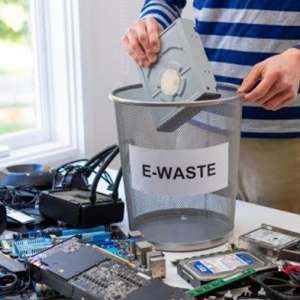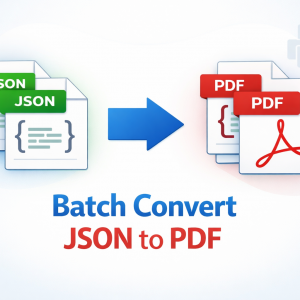The idea of building a robust and adaptable supply chain has never been more critical. With the turbulence caused by pandemics, geopolitical shifts, and rapid advancements in technology, businesses must ask themselves a pressing question — how can they future-proof their supply chain for the next decade?
This article will guide you through the theoretical and practical strategies necessary to build resilience, agility, and innovation into your supply chain. Using research-backed insights, we’ll explore best practices, relevant trends, and actionable steps to ensure that your supply chain isn’t just equipped to survive but thrives amid uncertainty.
Understanding the Need for a Future-Proof Supply Chain
A supply chain is the lifeblood of businesses. However, exposure to global disruptions highlights its vulnerability. According to a McKinsey report, over 92% of firms experienced significant supply chain issues during the COVID-19 pandemic, costing billions of dollars in lost revenue and lasting reputational damage. Without proactive measures, these issues will only escalate in complexity.
Why does future-proofing matter?
- Globalization and Geopolitical Shifts: Trade wars, sanctions, and political volatility demand a supply chain that adapts in real time.
- Technological Transformation: Trends in AI, IoT, and blockchain mandate digital integration.
- Sustainability Imperatives: Stricter environmental regulations require green logistics and sustainable sourcing.
What Does a Future-Proof Supply Chain Look Like?
A future-proof supply chain isn't necessarily immune to disruptions, but it is designed for resilience, agility, and proactivity. It should be scalable and flexible, leverage data-driven decisions, and align with today’s global sustainability goals.
Companies pursuing this model often rely on advanced training, such as the flexible MBA in supply chain management with accredited degree offered by AIMS Education. This program delivers the critical skills needed to transform traditional supply chains into value-driven, sustainable ecosystems.
The Core Pillars of Future-Proof Supply Chains
Future-proofing your supply chain relies on aligning with the following pillars that blend best practices with cutting-edge approaches.
1. Supply Chain Digitization
Digital transformation enhances visibility, predictability, and efficiency. A research survey by Gartner reveals that 70% of supply chain leaders plan to accelerate digital initiatives by 2026.
How to Achieve It:
- Implement Cloud-Based Systems: Centralize data to improve cross-functional decision-making.
- Adopt Predictive Analytics: By combining AI and big data, you can predict demand spikes and prevent costly delays.
- Leverage IoT: Internet-enabled sensors improve inventory tracking, logistics, and environmental monitoring.
2. Building Resiliency
Resilient supply chains can absorb disruptions without halting operations. Harvard Business Review found resilient companies recover operations 4x faster than others after crises.
Practical Steps Include:
- Create Diverse Supplier Networks: Relying solely on one supplier, especially internationally, increases vulnerability.
- Redundant Inventory Practices: Carry buffer inventory for critical materials.
- Scenario Planning: Create contingency plans for major disruptions.
3. Integrating Sustainability
Sustainability isn’t just a buzzword; it’s a necessity for longevity. Unilever saves over $200 million annually by implementing sustainable practices.
Actions to Consider:
- Green Logistics: Optimize transportation networks to reduce carbon footprints.
- Ethical Sourcing: Partner with suppliers aligned with environmental and labor standards.
- Circular Economy: Reduce waste by designing for recyclability and reuse.
4. Agile Operational Models
An agile supply chain is responsive to changing demands, both from customers and external market factors.
Five Keys to Enhance Agility:
- Adopt demand-driven supply chains.
- Use dynamic pricing and real-time inventory tools.
- Train cross-functional teams for rapid deployment.
- Introduce hybrid distribution centers (brick-and-mortar alongside e-commerce).
- Increase partnerships with third-party logistics (3PL) providers.
5. Continuous Workforce Upskilling
Supply chain professionals must stay ahead of evolving trends like blockchain and robotic automation. Programs accredited internationally, such as those by AIMS UK education, are trusted by professionals worldwide and emphasize lifelong learning while providing flexibility for global learners. These programs elevate both technical expertise and decision-making skills.
Practical Strategies to Prepare for the Decade Ahead
Equipping your supply chain for the future calls for actionable methodologies grounded in cutting-edge innovation and proven practices. Below, we outline strategies to achieve robust future-proof systems.
Short-Term Strategies
- Invest in Technology: Enable digital control towers that improve visibility in real-time operations.
- Develop Redundancy Plans for essential suppliers and transportation.
- Enhance Transparency through end-to-end monitoring using blockchain systems.
Mid-Term Strategies
- Explore Nearshoring or reshoring options to minimize geopolitical risks.
- Digitally Upskill Teams to operate new AI-driven platforms.
- Benchmark Success Metrics of competitors to incorporate industry best practices.
Long-Term Strategies
- Collaborate with Accredited Educational Institutions to adopt cutting-edge supply chain methodologies, like those taught in global recognition programs such as AIMS Education’s MBA program.
- Adopt Circular Economy Principles, ensuring waste neutrality and economic value optimization.
- Automate Decision-Making Processes using AI-driven models that evolve with each logistic cycle.
Real-World Examples of Future-Proof Supply Chains
-
Amazon’s Hybrid Model
The retail giant leverages robust AI systems and anticipatory shipping logistics to preempt customer needs, ensuring superior delivery speed and reliability.
-
Zara's Agile Manufacturing
Zara exemplifies agility by producing smaller inventory batches closer to the point of sale, eliminating large-scale redundancies.
-
Apple’s Sustainability Practices
Apple sources 100% of its materials ethically and optimizes its reverse logistics for long-term savings.
Their approaches to digitization, agility, and sustainability underscore the importance of well-executed supply chain management best practices today.
The Role of Education in Shaping Supply Chain Leaders
Global industry challenges require an informed workforce that blends theoretical insight with practical expertise. AIMS Education has set benchmarks in excellence for supply chain education by offering practical solutions, global accreditation, and flexible programs tailored for busy professionals worldwide. Such programs balance advanced conceptual frameworks with hands-on applications, ensuring more impactful decision-making.
Final Analysis
Future-proofing supply chains is no longer optional—it’s vital for survival and competitiveness in the global marketplace. Businesses must align themselves with strategies that anticipate change, integrate sustainability, and deploy advanced technologies.
While the transformation effort may appear overwhelming, it becomes achievable when guided by structured frameworks, data-driven insights, and specialized education. Institutions like AIMS Education play a crucial role in equipping professionals with the foundational and advanced skills to lead this evolution effectively.
By adopting the strategies discussed above, organizations can create a supply chain that weathers the challenges of tomorrow while unlocking opportunities only accessible to those prepared for the future.






